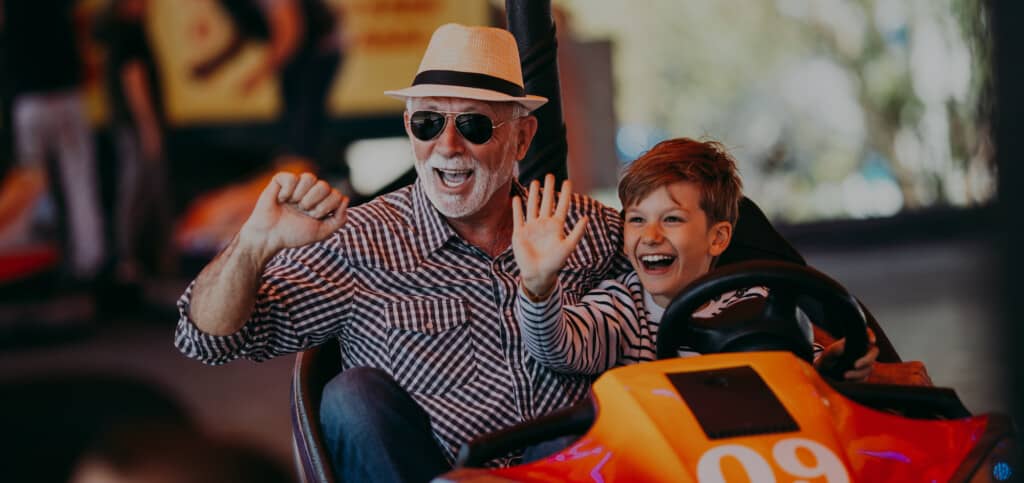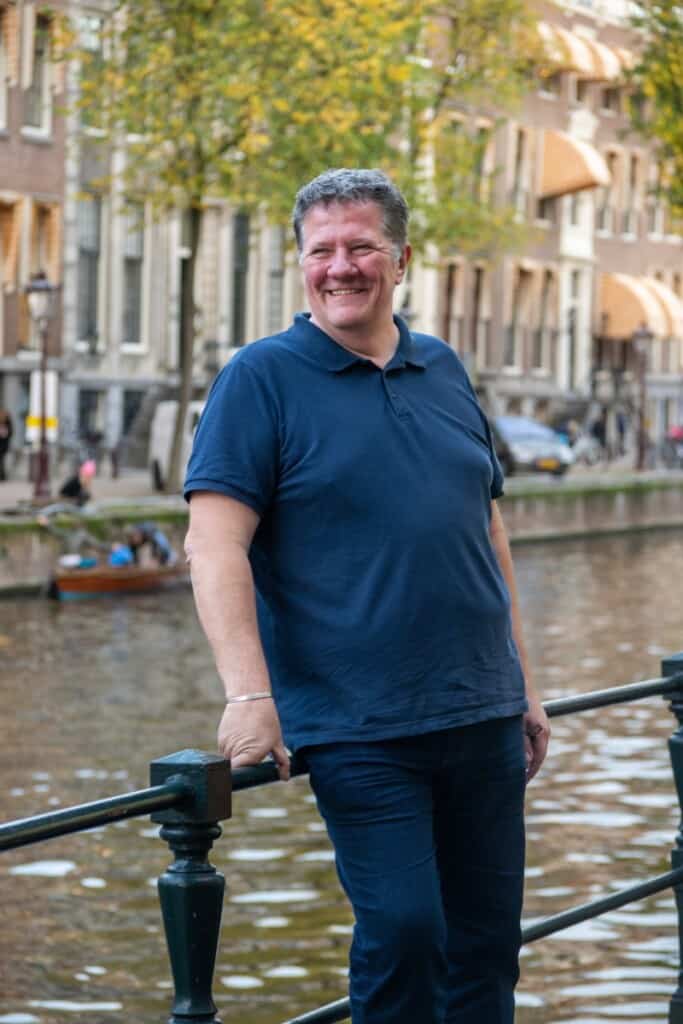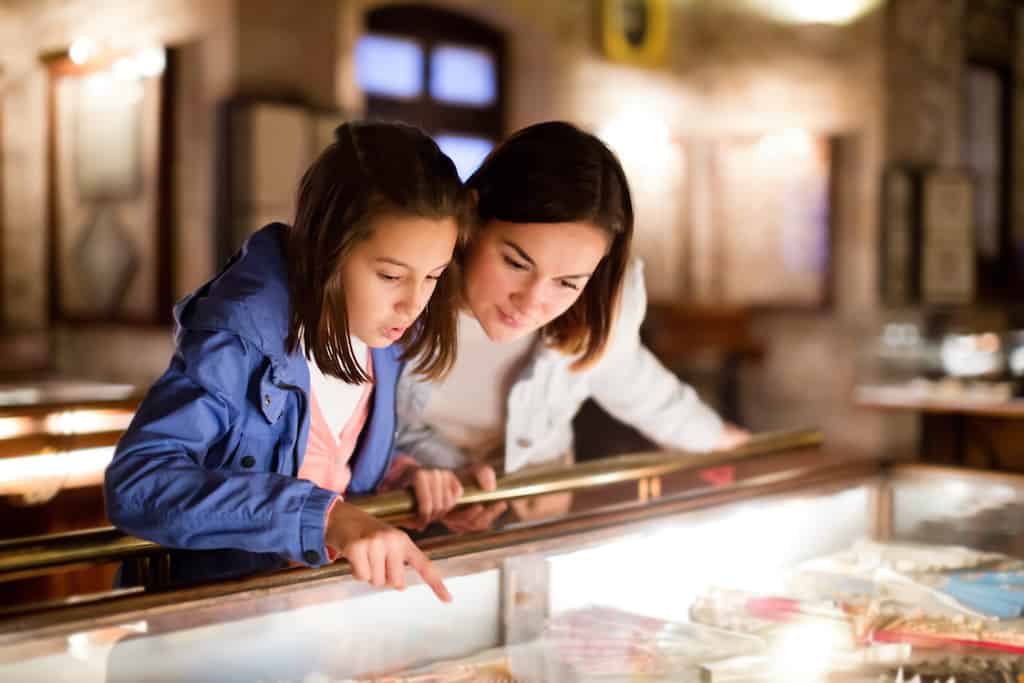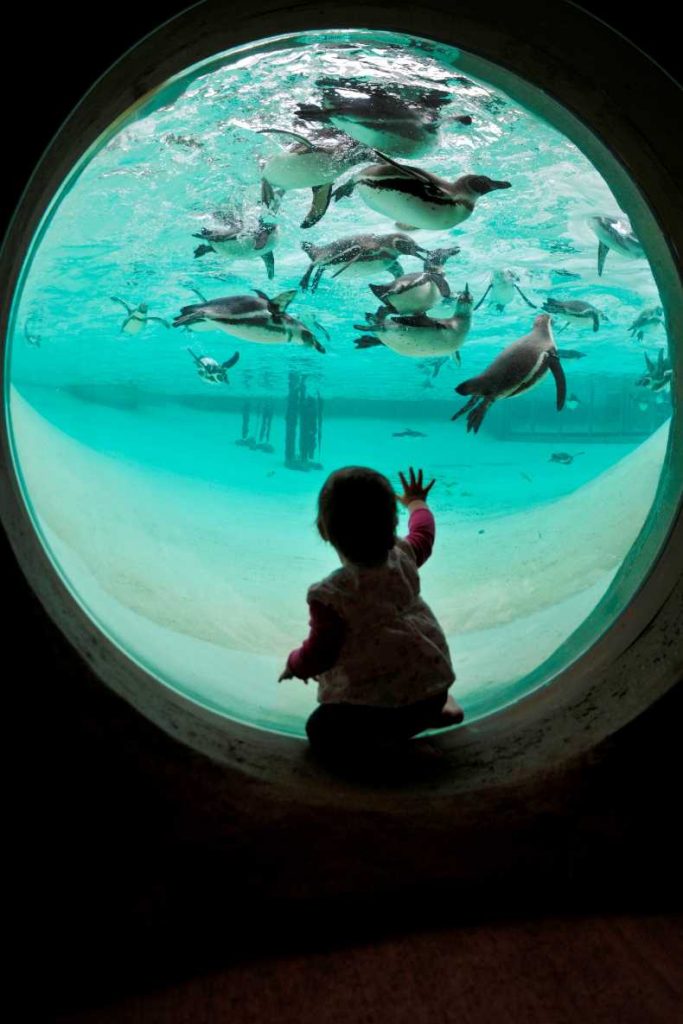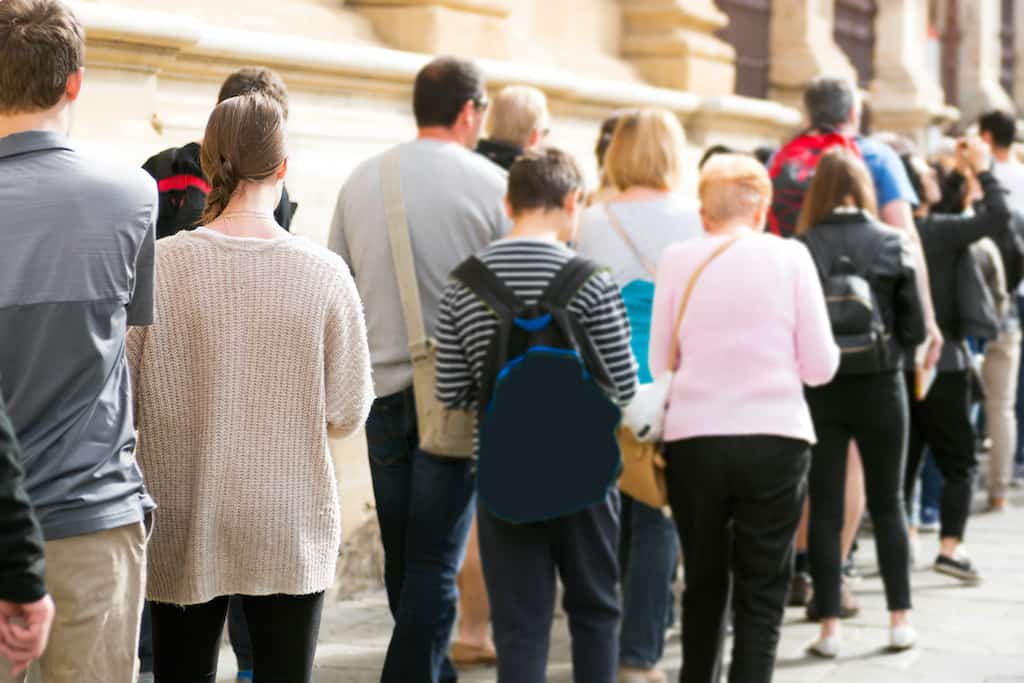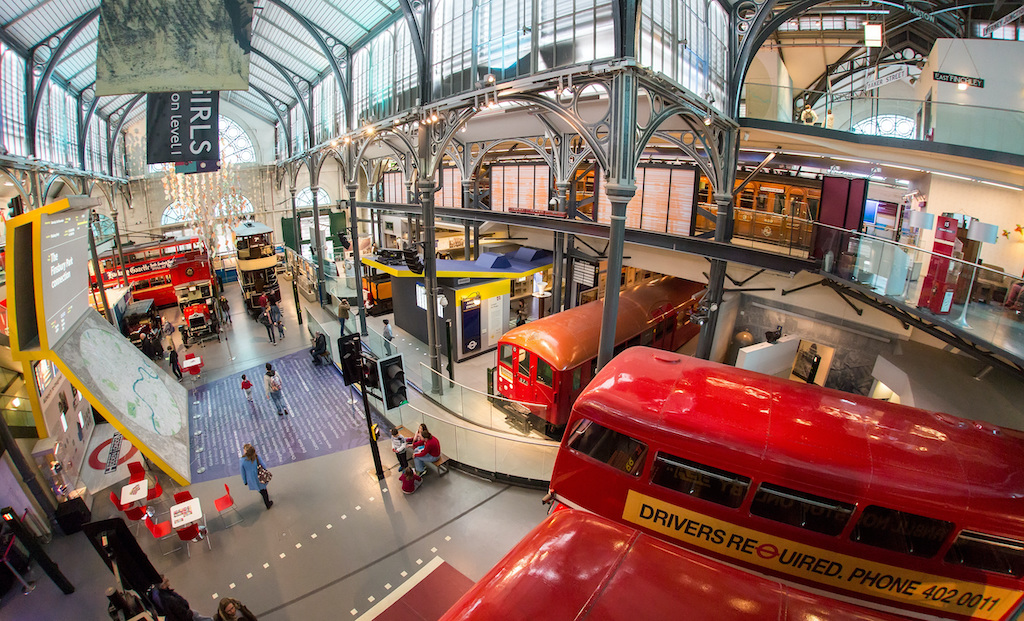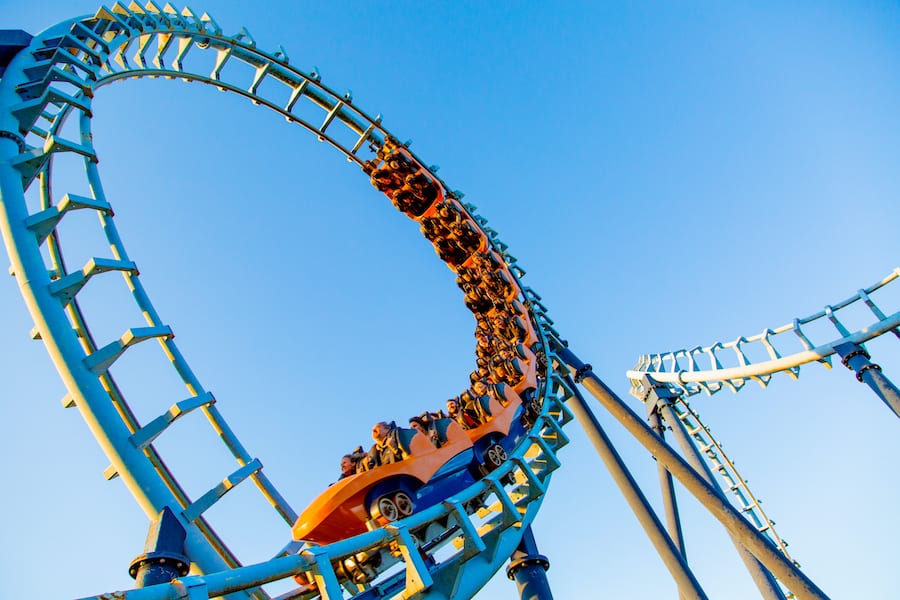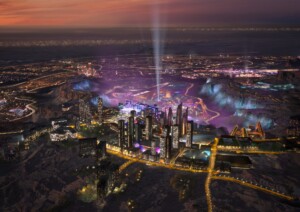Convious is a leading software developer and app innovator for the experience economy. The firm leverages the power of data to manage pricing, capacities, and promotions in real time, delivering significant financial and efficiency improvements to attractions alongside a transformed guest experience.
Andy Povey joined Convious in November 2021 as managing director for UK and Ireland. He has over 30 years of experience in the leisure industry and has held prestigious positions for operators including Merlin and suppliers including Gateway Ticketing. He specialises in developing and implementing business intelligence and customer tracking strategies and has a proven track record of successfully growing companies into new market sectors and geographies.
Povey is leading Convious’s ambitious growth plans in the UK, developing solutions that combine operations management, e-commerce, and visitor experience functionalities, all from one comprehensive cloud platform.
Povey’s observations are rooted in decades of expertise: he has worked in the attractions space since driving the train at Chessington World of Adventure back in the very early nineties.
“It was fun,” he says. “There’s still no better job in the industry than operating a ride.” Building on this front-line experience with a career that covers many aspects of the industry, he adds:
“Essentially, the way to enable the industry to be more successful is to approach it by understanding more about what the visitors want.”
Digital trends in attractions: the guest journey is key
He shares his insights and the elements that differentiate Convious in the attractions industry.
“The guest journey is becoming much more personal. We’re becoming more individual, in the same way that society is moving on and becoming more accepting of differences and diversity.”
He recollects installing a system 20 years ago and having conversations about what a family ticket should look like; for instance, should it be two adults and two children?
“The marketing people wanted to know what the visitor mix was, what country a group came from, and where the marketing spend was going. That was as granular as it got. You’d wait for the end of the year, then say: ‘Well, we had 200 visitors from Australia, so we should spend a proportion of our budget on marketing in Australia.’”
Things have come a long way since. Today, we are almost at the point where we can track down to the individual level. If the data collected on a guest shows that they are interested in a certain type of experience, personalised marketing can target that. They might be a foodie for example, but when they come to the attraction, the operator can focus on promoting its food offer, rather than its thrill ride.
“The possibilities are infinitely more individual and tailored,” says Povey.
Personalisation
This is something the big retailers have been doing for years. Now, it’s coming to the attractions industry. He adds:
“Personalisation is transforming our industry. If operators don’t embrace this idea, they might not exist in 18 months. A lot of them are run using software written by people of my generation. When I did computer science at school, the lecturer was a page ahead in the book, whereas now, the 20 and 30-year-olds writing code are digital natives. It’s normal for them.”
The industry is going through a generational change. In terms of the visitor journey, personalisation means people are being offered something relevant to them. Take, for example, an army museum. With family groups, not everyone who visits is necessarily going to be interested in that topic:
“Very stereotypically, it will be your typical nuclear family of mum, dad, two kids. Dad wants to see the tanks; Mum and the kids aren’t interested,” observes Povey.
A solution here is to ensure that if there is an interpretation of the tank, for example, or an experience that is going to take Dad five minutes, another experience is provided that will last the same amount of time, and that will interest the rest of the party.
“By understanding more about how people are engaging with your facility, you can choose to change the experience, so it’s better suited to the people who are coming.”
Quality over quantity
The COVID-19 pandemic accelerated certain trends, such as online booking to control capacity. This led to a shift away from the focus on visitor volume, and more of an emphasis on a quality experience. Operators will do well to continue in this vein, even though mandatory capacity limits are no longer in place, in most areas.
Giving a person example of how this positively impacted his experience as a visitor, Povey says:
“I’ve got seven-year-old twin girls. I took them to London Zoo on a sunny Saturday in July last year. It was stinking hot, bright sunshine, with not a lot of shade. I was dreading it because I thought I was going to have two sweaty, irritable kids going, ‘Pick me up, Daddy: I can’t see…’
“But, because the zoo has retained its capacity control, it wasn’t ram-packed. And so, the experience was superb.”
It’s not all about volume
He contrasts this with the past:
“We used to do a promotion with a national newspaper. If you bought five copies of the paper a week, you’d get free tickets to Alton Towers. That was all about volume. I was the duty manager at Madame Tussauds a long, long time ago. People used to queue for hours to get in.”
In fact:
“The length of the queue outside Madame Tussauds was always used as a benchmark of how successful London was in attracting overseas visitors. Then, when you got inside, you were effectively queuing to get out.”
“If we can retain this view of quality over quantity, then it’s going to be a better experience for everybody.”
Many leading attractions are seeing this in practice. For instance, Disney has said that it is not aiming to return to its full pre-COVID visitor numbers, with CFO Christine McCarthy pointing out that visitor satisfaction has increased across its theme parks as a result of the reduced capacity over the past two years. Elsewhere, the Louvre also saw a boost in visitor satisfaction since deciding to limit capacity in early 2020, prior to the pandemic.
Digital trends in attractions
Another example is Marwell Zoo, which has calculated that it is most profitable at 60% of full capacity.
“People can get into the cafe, people can go and buy things in the gift shop, and they can have a bit of space around them,” says Povey. “The experience as a guest is much nicer, and if you have a better experience, you are prepared to spend more money.”
This increase in spending has certainly proved to be the case at Disney; its financial results for Q1 2022 showed it had enjoyed the second-best quarter of all time. Speaking to investors in March 2022, McCarthy said: “If you’re having a good time, you’re probably inclined to spend more money, which has been the results we have had to date.”
One further attractions trend that was accelerated by the pandemic is digitisation; McKinsey Analytics has estimated that COVID accelerated digital growth by three years. And, perhaps unexpectedly, all generations have been involved in this growth.
Before the pandemic, some attractions that traditionally attract an older demographic, such as stately homes or botanical gardens, may have been worried about bringing in digital wallets or online bookings in case their guests struggled with the concept. Yet post-COVID, we’ve seen wide adoption of online booking throughout all demographics.
“The older generation were the ones who were told to isolate,” says Povey. “And they adapted quickly, buying online, and so on. The digital transformation has accelerated not just across the whole population, it has accelerated massively more in certain sections of the population, changing preconceptions.”
The rise of online booking and mobile devices
Touching on key digital trends in the attractions space, Povey identifies the fact most bookings come from a mobile device. This is often due to double screening: the phenomenon where people will be scrolling through their phone or pad even as they’re watching a movie.
A prime example is The Warner Bros. Harry Potter Studio Tour – this popular attraction sees a spike in bookings every time Harry Potter is shown.
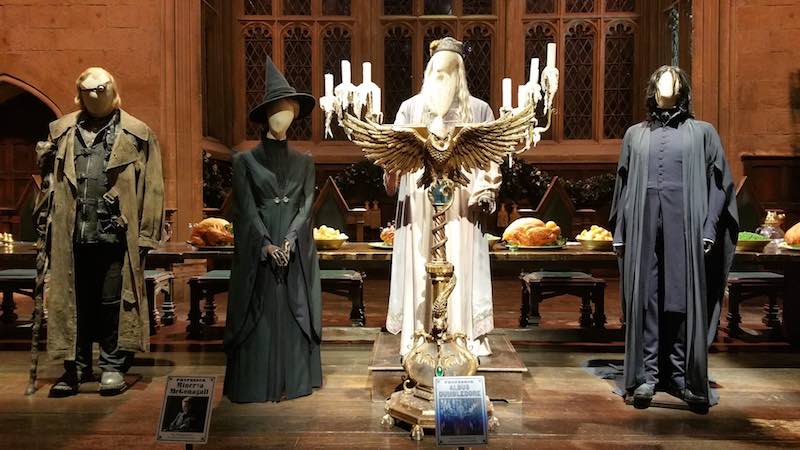
“The internet has gone from being a thing that you go to, to becoming just a part of our normal life,” says Povey. “What the attractions industry hasn’t worked out yet is if it should embrace it, and how.”
Speaking of the ever-present mobile device, he also talks about the boom in augmented reality experiences in recent years:
“There was a big rush to embrace augmented reality a few years ago. For instance, there was a Forestry Commission app with the Gruffalo. You could take a picture of your child sitting on a tree stump, and the augmented reality would put an image of the Gruffalo next to your child. The app was pulled after less than 12 months, because although the idea seems great, what you got was parents looking at their phones, while the child was getting nothing from it at all. They put in wooden sculptures, instead.”
Finding a balance
He feels that families will, increasingly, want to get away from devices when they are planning a day out together. After all, taking your children to an attraction, whether that’s a gallery, a museum, a theme park, a garden, or a zoo, is your opportunity as a family to embrace one-on-one time, not to engage through a device.
“Essentially, in the attractions industry, we haven’t yet worked out how we add digitisation to our experiences. It needs to be something that either deepens the experience or extends it. There is a lot of potential. Soon, someone will come up with a good way of bringing the physical and the digital experience together.
“A lot of attractions did a lot of stuff around digital over COVID. Some of it was good. Some of it wasn’t.”
In short:
“In terms of predicting attractions trends for the future, using digital to do things that you can’t do in the physical world is where that success will lie.”
The Tank Museum, for instance, uses digital to offer visitors an inside view of a tank. Meanwhile, London Transport Museum has a virtual tour of hidden tunnels and bunkers.
At the other extreme, he adds:
“We’ve still got people selling hardware for audio guides in museums. Why are they still using such an outdated business model? I suspect the excuse that a section of the audience is unable to engage in digital innovations will go away.”
Digital trends in attractions: e-commerce & the personal touch
When it comes to e-commerce, he predicts that an increasing number of attractions will see that they can reward guest loyalty in a more meaningful way.
“If you’ve got a roller coaster spotter who is bringing a group of 20 friends to an attraction, for example, a successful attraction will find ways of engaging with those people in a more meaningful fashion for those people, generating something from it.”
In this case, the enthusiast is going to get something back out of the relationship, which might be a ‘money-can’t-buy’ type experience.
“Blackpool Pleasure Beach do this thing with the lift chains on the coaster,” he says, giving an example. “When they replace them, they remove the links of the old chain, clean them, chrome them, mount them on a plinth, and sell them. This shows how attractions can engage with enthusiasts and advocates in a much more meaningful, two-way fashion.”
To sum it up:
“I suspect the trend will be a move towards two-way communication, rather than the old build-it-and-they-will-come model.”
Driving growth for attractions
Since e-commerce has become an essential rather than an optional extra for attractions, something driven by the pandemic-induced acceleration of digitisation, some attractions have rushed into implementing systems that might not connect optimally with their wider ecosystems or workflows. This is something Convious is positioned to address.
Talking about driving growth across the UK and elsewhere, Povey says:
“The attractions world is at least 10 years behind the rest of the world, in terms of its technology. I was at Merlin until 2008. At that point, they still didn’t have a means of sending an email to every annual pass holder.
“Our challenge, then, is being able to show to our prospective customers that what we’re talking about can be done.”
Digital trends in attractions: dynamic pricing
Dynamic pricing, he predicts, is a digital trend for attractions that is about to take off in a big way:
“The cost-of-living situation will drive it,” he says. “Every attraction is going to have to do something about pricing. People have less spending money. We have an awful recruitment situation, so wages are going to have to go up. The only way that you increase wages is by increasing income, by increasing your price.
He cites an example:
“Our partners at Pleasurewood Hills Family Theme Park in Suffolk have been using dynamic pricing for three years.”
For this venue, Tuesday, Wednesday, and Thursday are the busiest days of the week. Meanwhile, Mondays and Fridays are changeover days for all the holiday accommodation. So, their potential audience is reduced by 50% on Monday and Friday.
Accordingly, he explains:
“They reduce the price on Monday and Friday to bring more people in. And ultimately, that means that more people can experience it at a lower price to them. It’s a better deal for the consumer, and yet they’re still increasing their profits.”
Using price as an incentive
Povey believes that because of the economic situation, the attractions sector will have to explore this digital trend in more detail. It’s a matter of using incentives to bring the volume in on the days that you want it:
“If you have a bank holiday weekend where you get, for instance, 10,000 visitors on the Monday, and 5,000 on both Saturday and Sunday, that means, essentially, a horrible, crowded experience on the Monday, and a suboptimal financial performance on the Saturday and Sunday.”
“But, if you could make that seven and half thousand every day, by manipulating price and rating different periods, then you’ve got slightly higher attendance, a much more even experience, and individuals paying less, on balance.
“So, I see dynamic pricing as being a big trend.”
The trend for digital engagement in attractions
Digital engagement is another growing attractions trend that Povey highlights. Younger people are moving into positions of authority in marketing roles and decision-making.
“The age of having someone with a PhD to configure a solution and a 400- page manual has gone out of the window. You don’t get a manual for WhatsApp or TikTok, and that’s the generation that we’re talking to now.”
This, in turn, will boost a move from personalisation, the current trend, to individualisation, taking it to the next level:
“With all this digital engagement, we can tell how many people from a certain postcode area, in a certain income bracket, who have a certain level of interest in such-and-such are coming in the next 18 months. We have so much data. It’s rapidly getting to the point that we will know exactly when so-and-so is going to visit.”
The experience economy
This is in line with the trajectory described in Joe Pine and James Gilmore’s The Experience Economy:
The commoditisation of services evolves through staged human experience that people are willing to pay for, towards transformation, characterised by ‘a deeper sense of commitment to the well-being of each individual buyer than experience-stagers alone may demonstrate.’
Pine & Gilmore, 2011
This opens many possibilities when it comes to marketing.
“Marketing is about doing what your customers want,” he points out. “And we’re in a fantastic place. We’re not selling insurance. We’re not selling electricity bills. Generally, every attraction has something that people want to do.
“Five years ago, digital marketers were performance-managed on how many emails were sent out. Now, more savvy marketing teams are realizing that it’s not about volume, but the level of engagement.”
He predicts:
“In eighteen months, it will be more specific. It won’t just be about how much engagement you’re getting, but what engagement you are getting from specific individuals.”
Building connections
It is all, he says, concerned with the relationship. We all have our favourite attractions, our favourite parks, rides, and galleries.
“What does that place know about you at the moment, and how much involvement does that place have with you? That will all change for the more successful operators.”
There will be a chasm between those who get on board with this, and those who don’t:
“Our competitors are not even having these conversations,” he comments. “I have been part of many discussions with one of the better providers about what should be done in terms of software development, and these conversations were not happening. Nobody in their business gets it. We appear to be the only ones having these thoughts.”
This is likely to be an increasingly significant differentiator:
“There is going to be a massive shakeup in the industry,” he says, again referencing Joe Pine. “We are just moving up from that level of commoditisation.”
The Convious team will be exhibiting at IAAPA Expo Europe in London next week and can be found at booth #611. To book a meeting, please click here.
